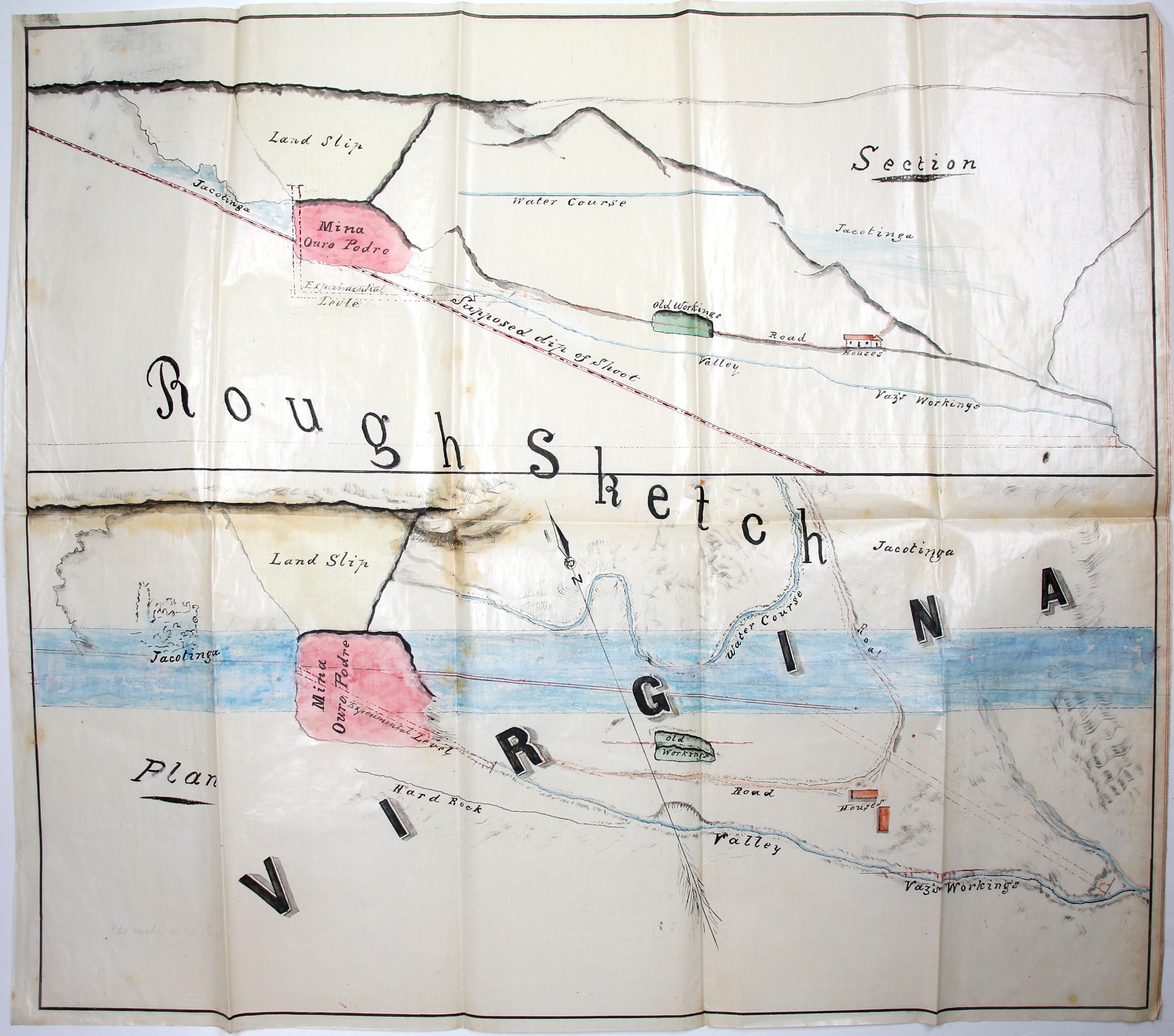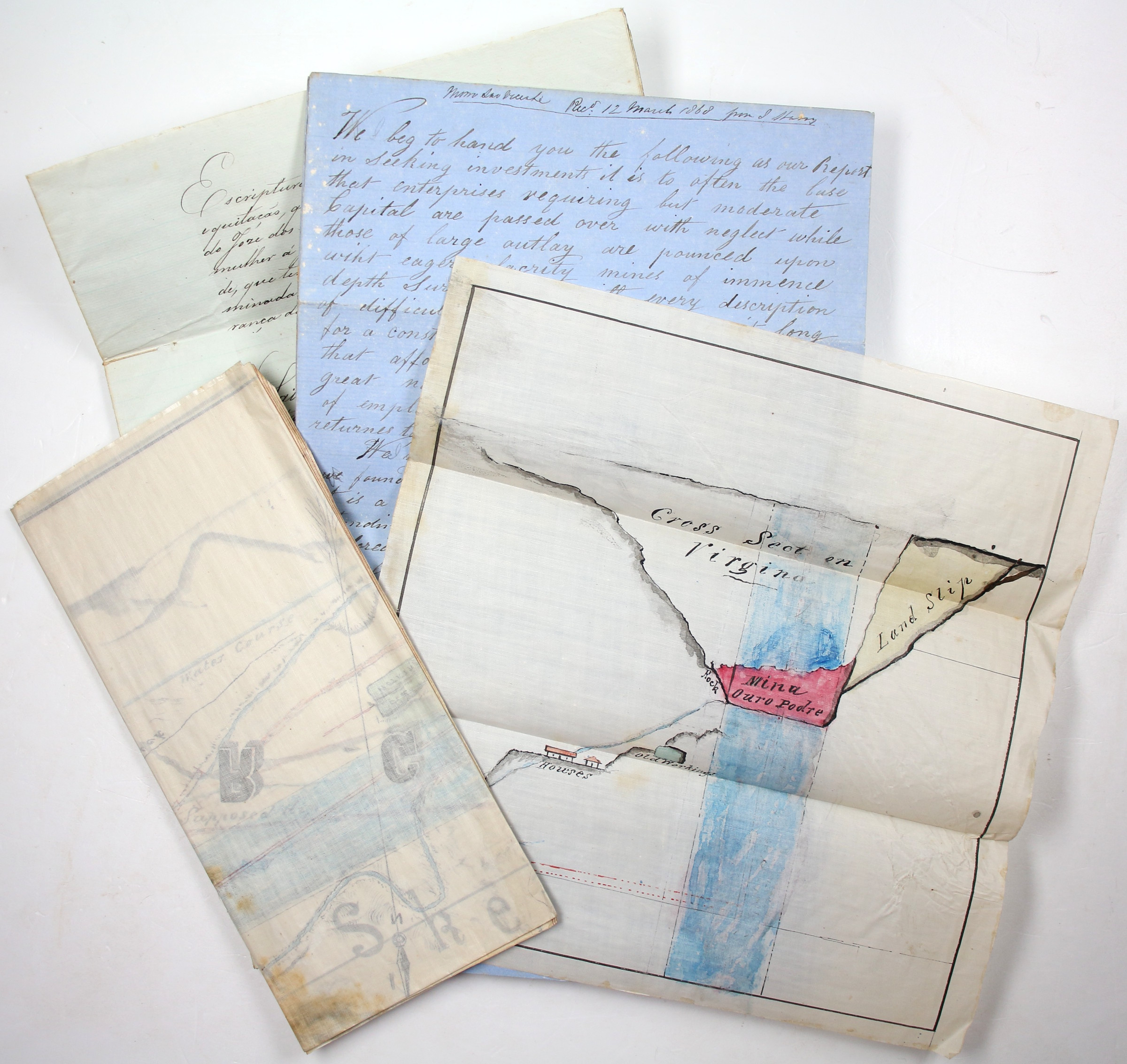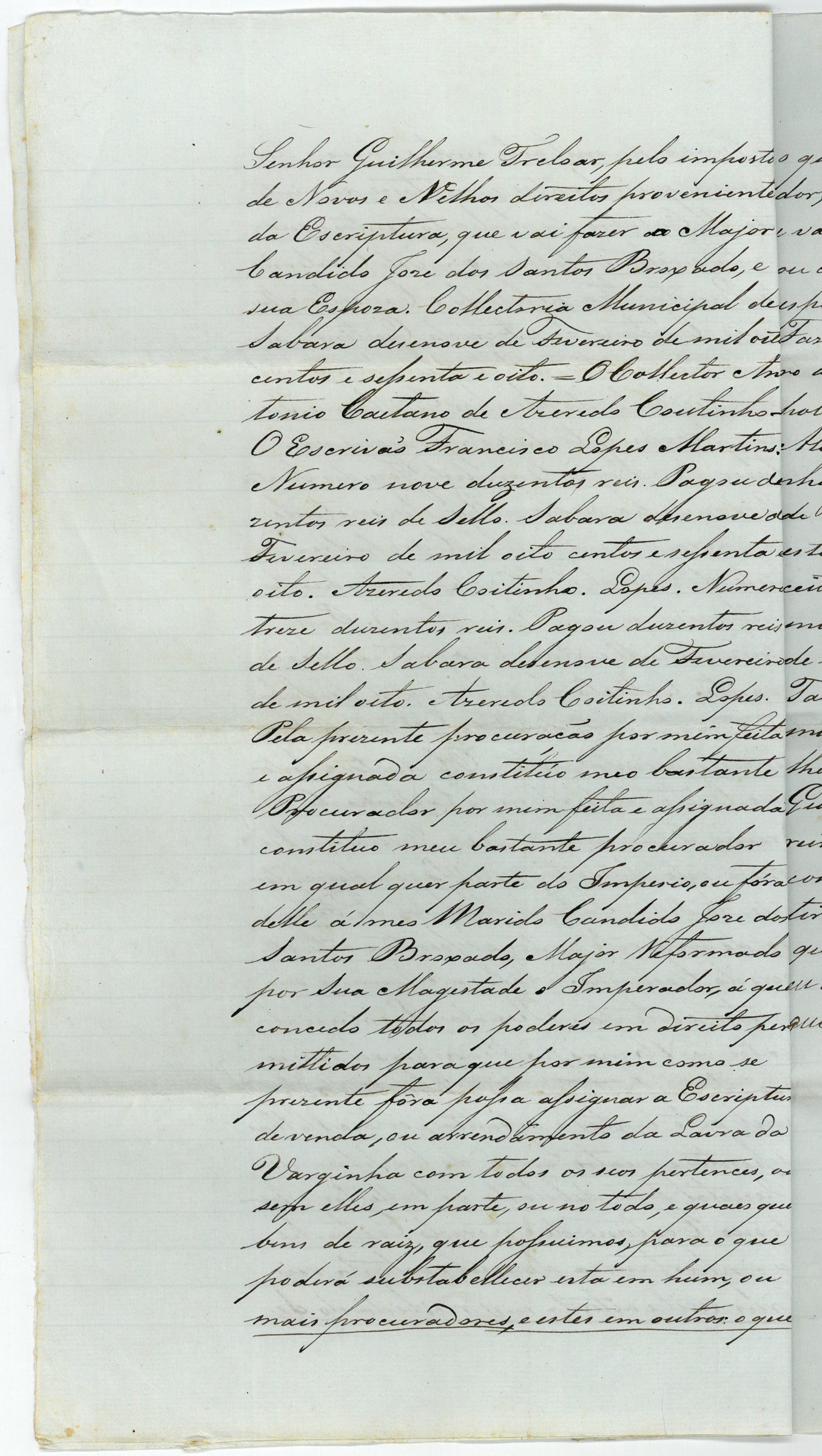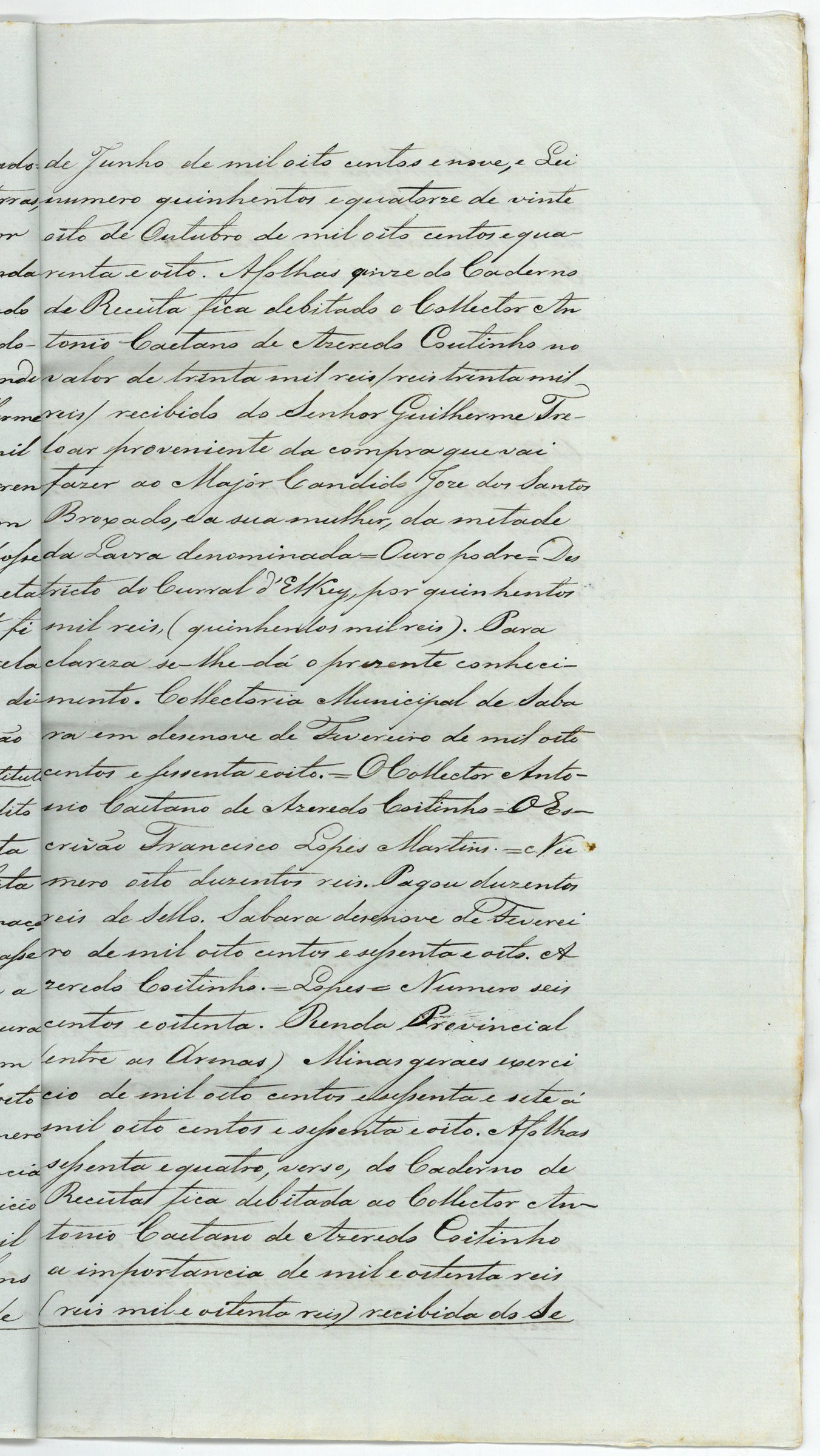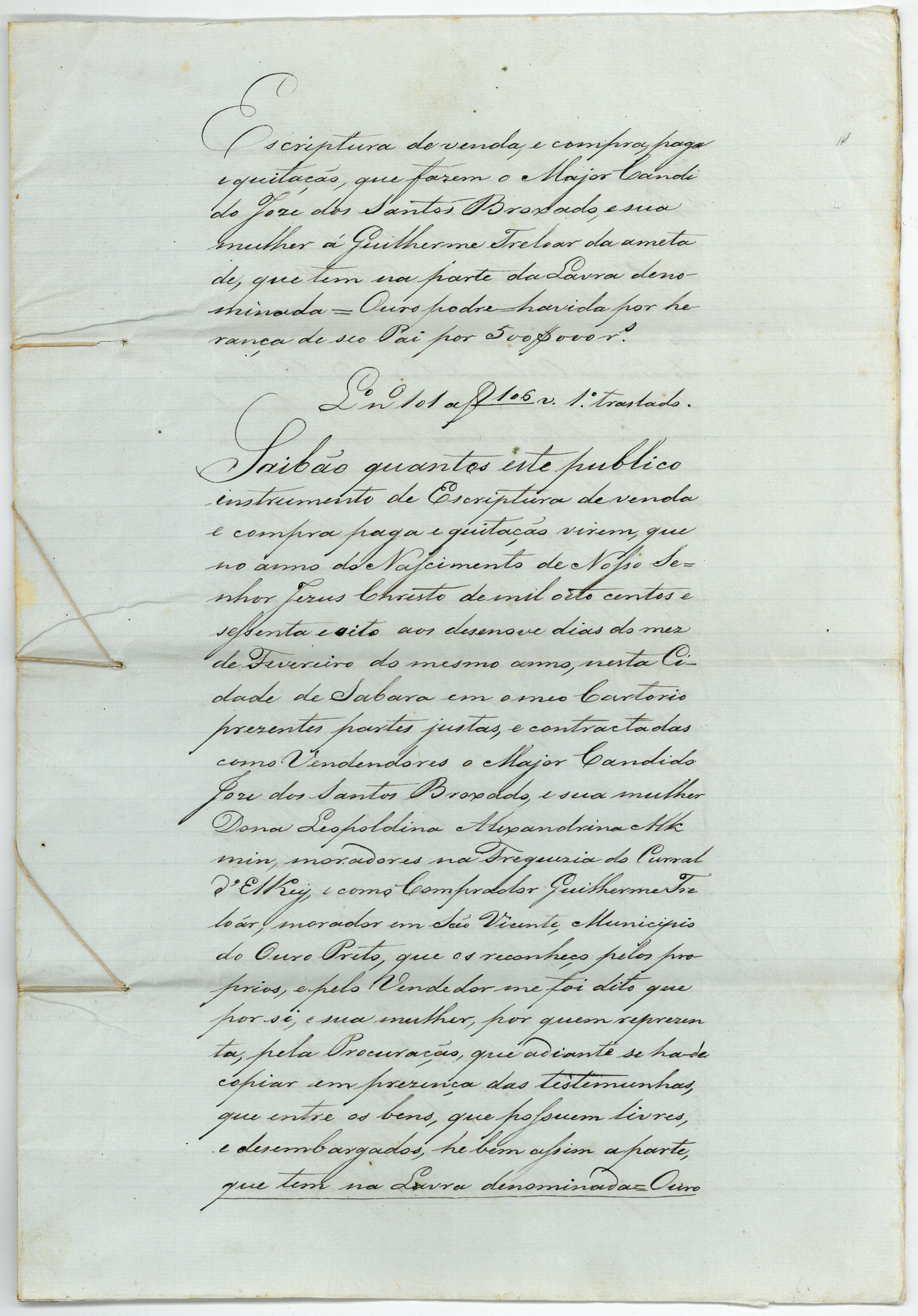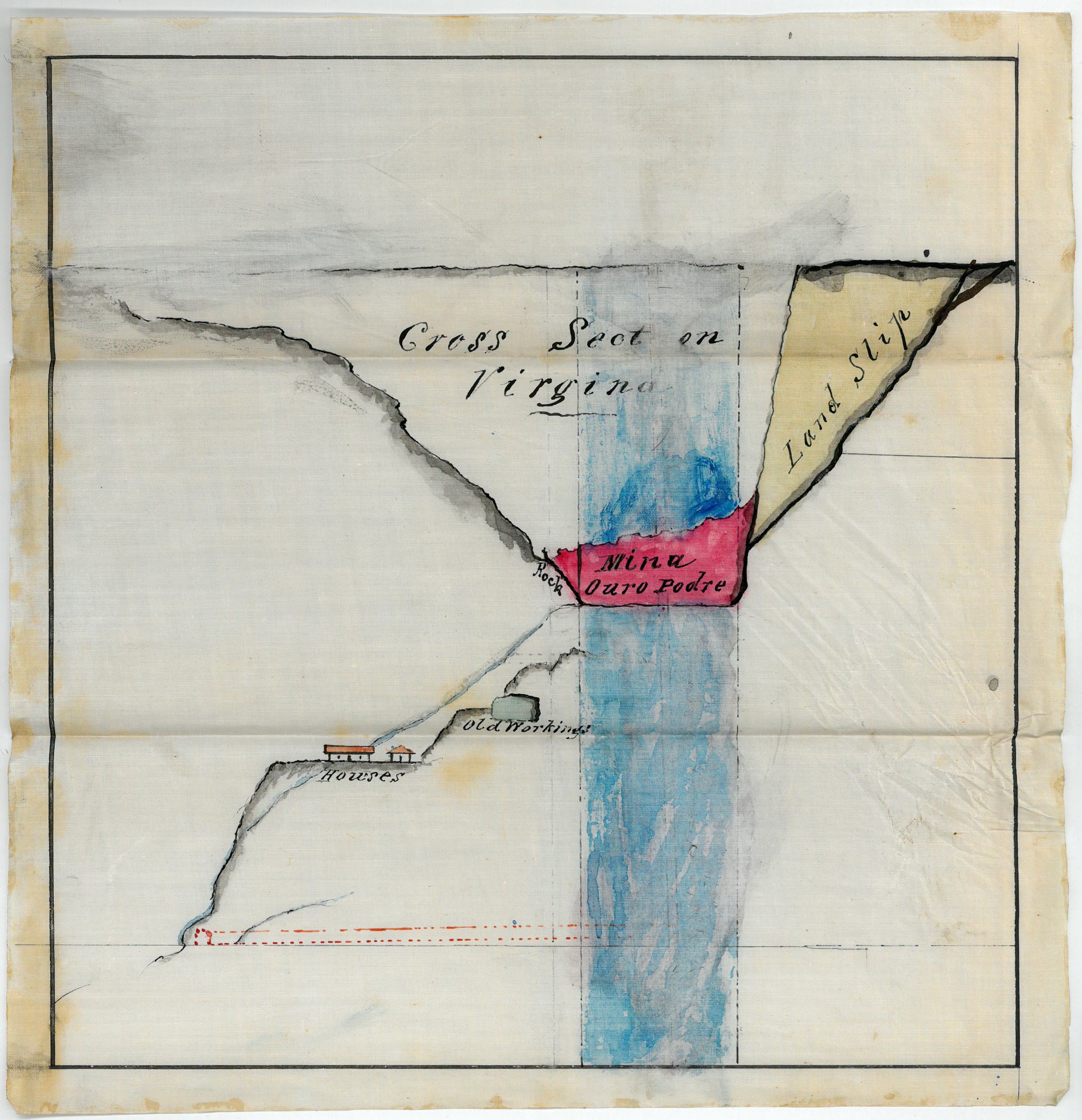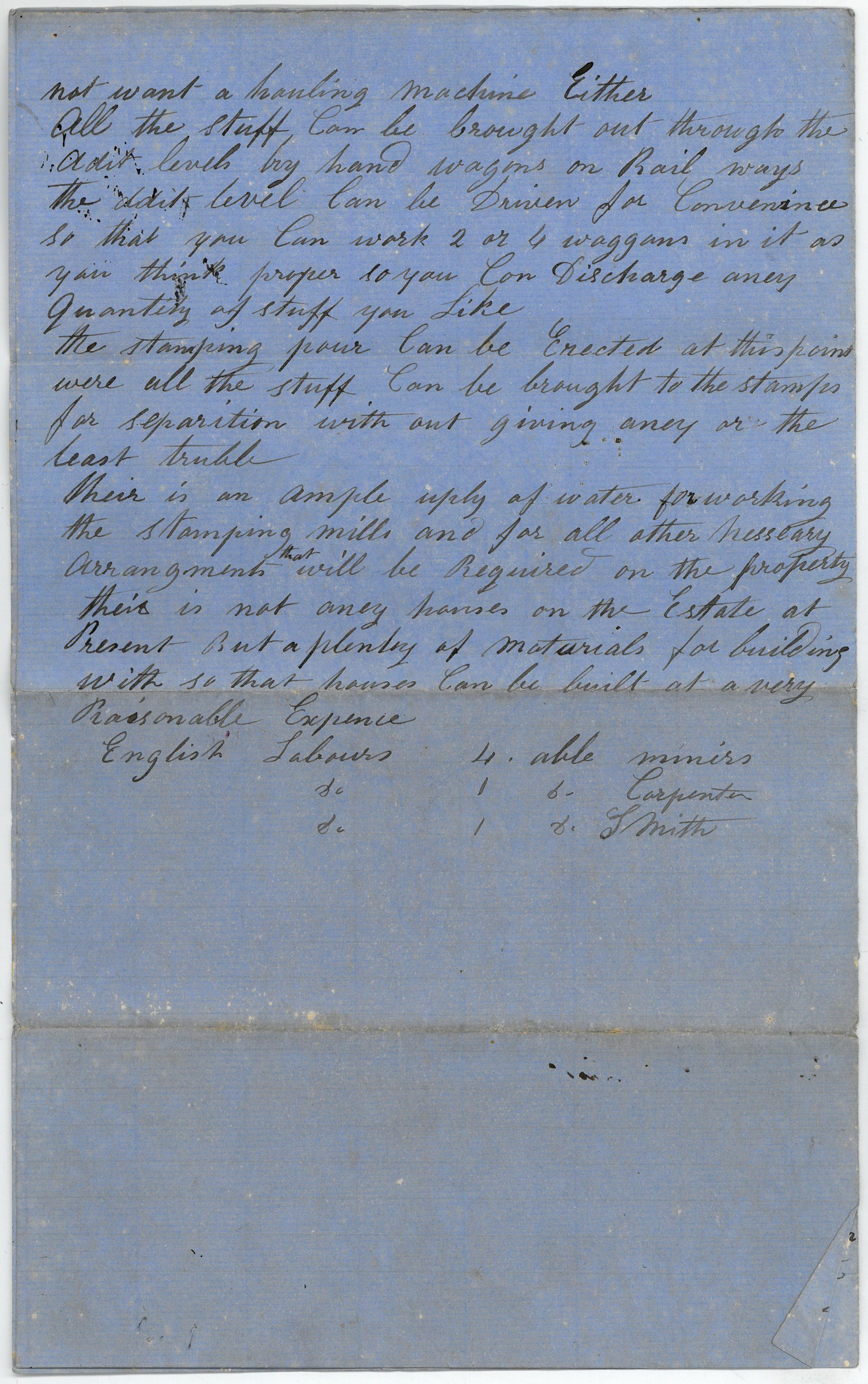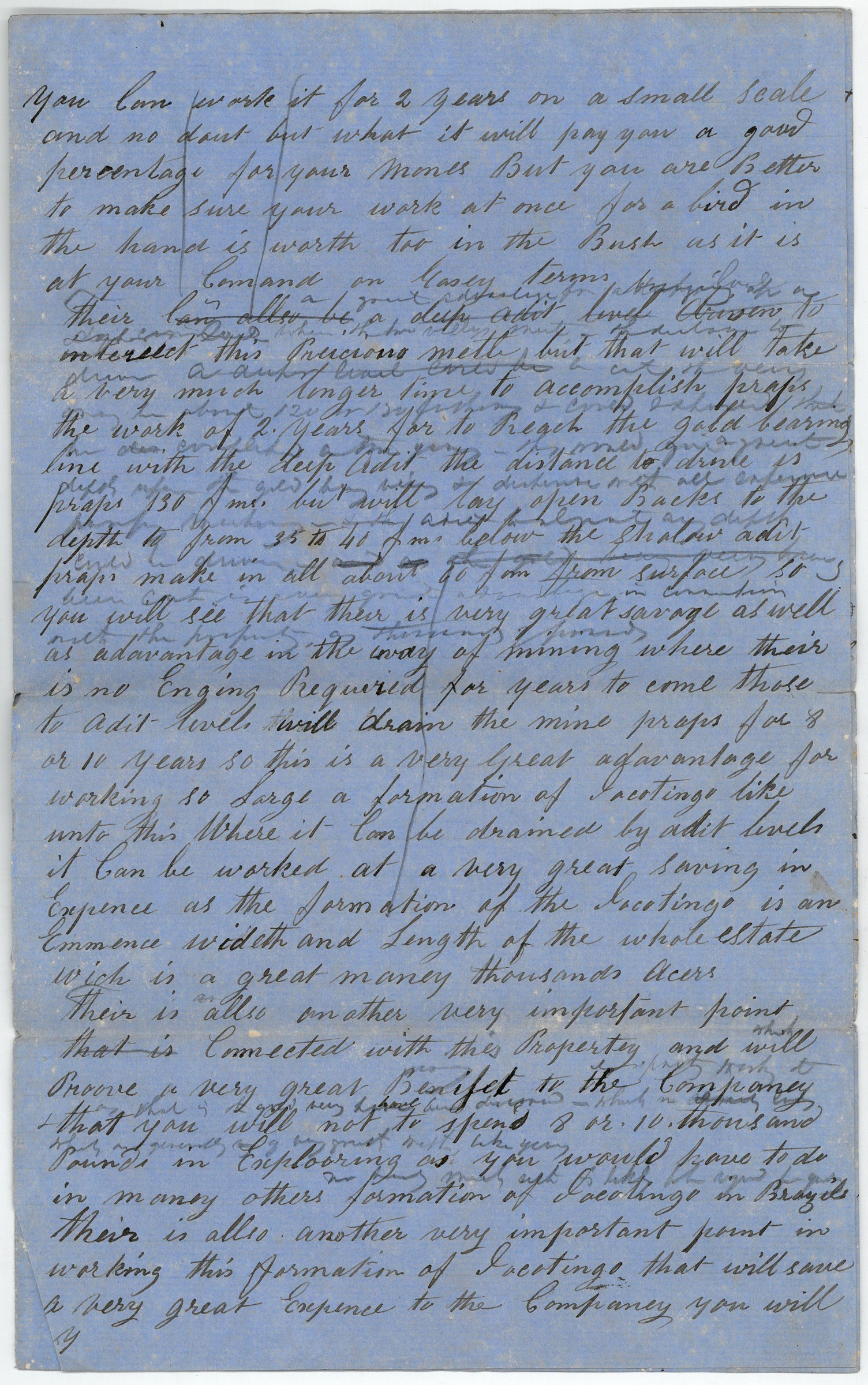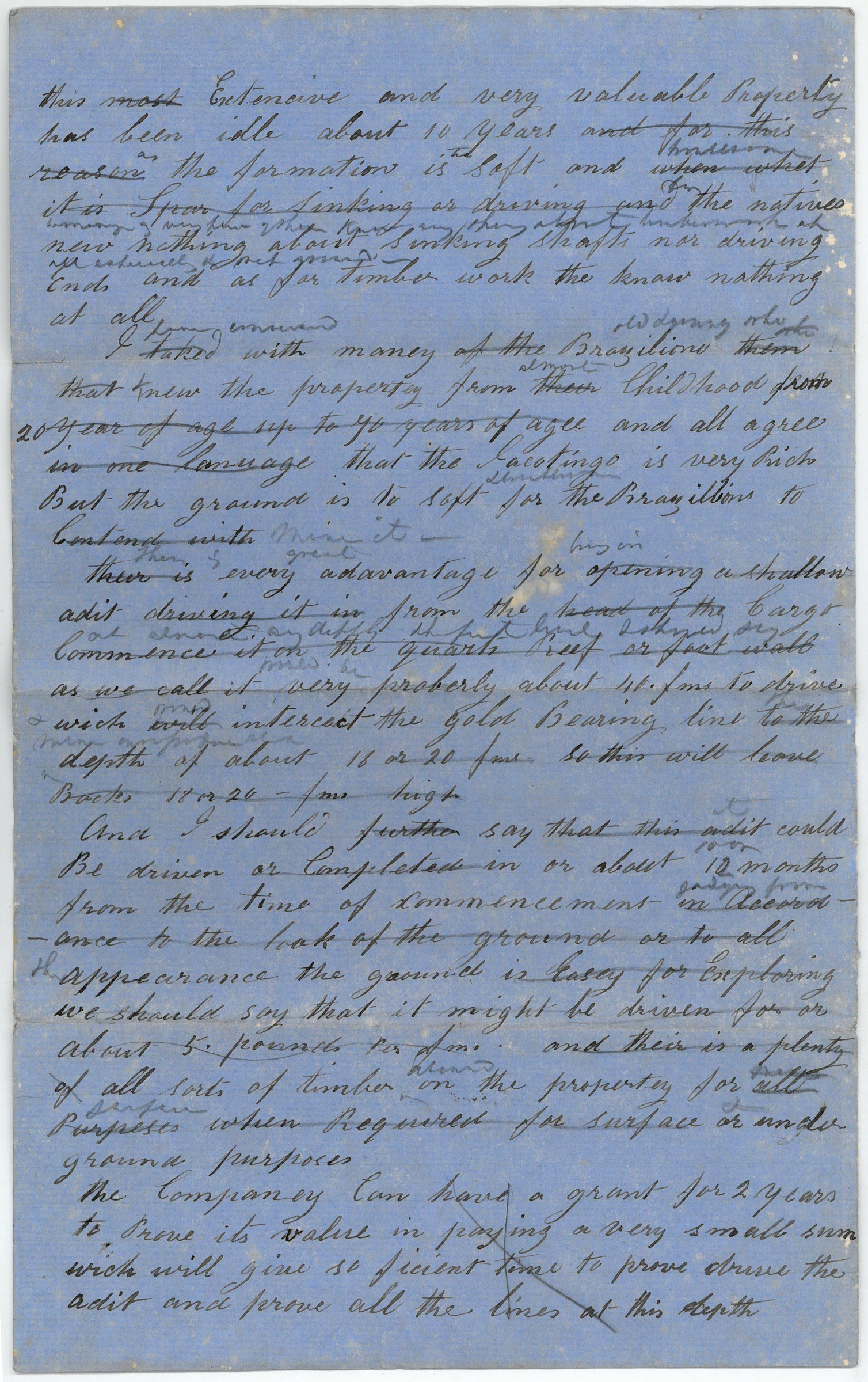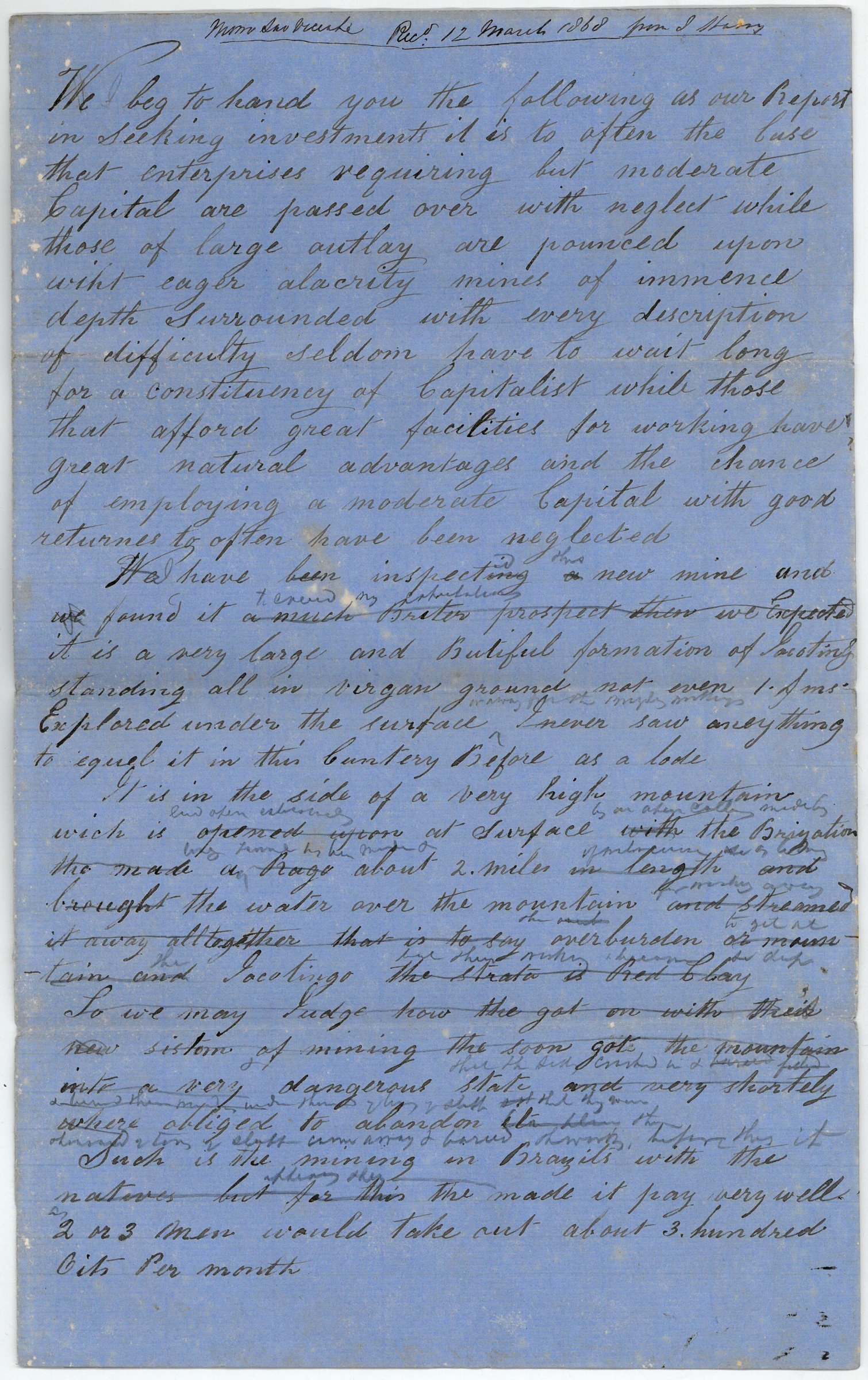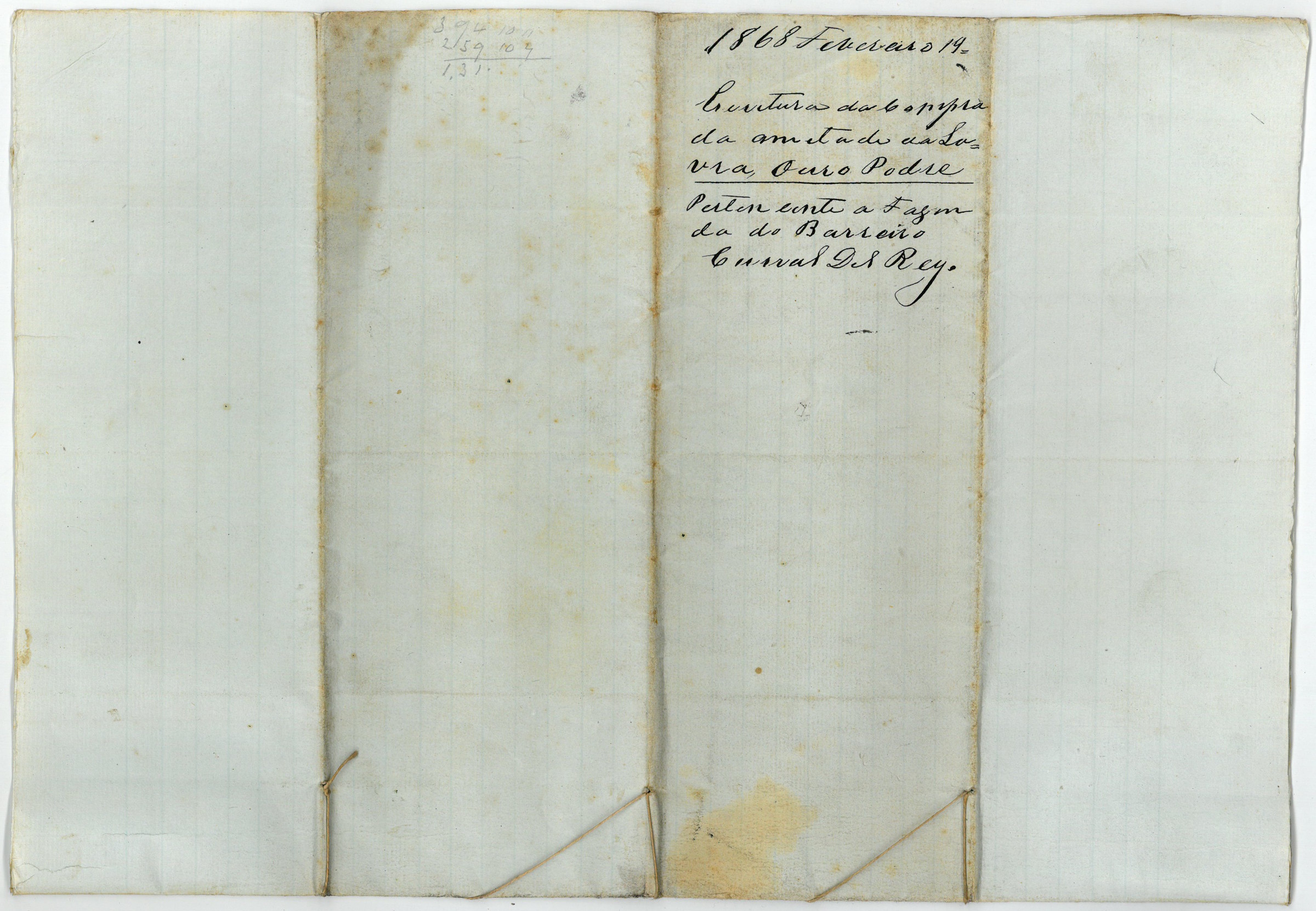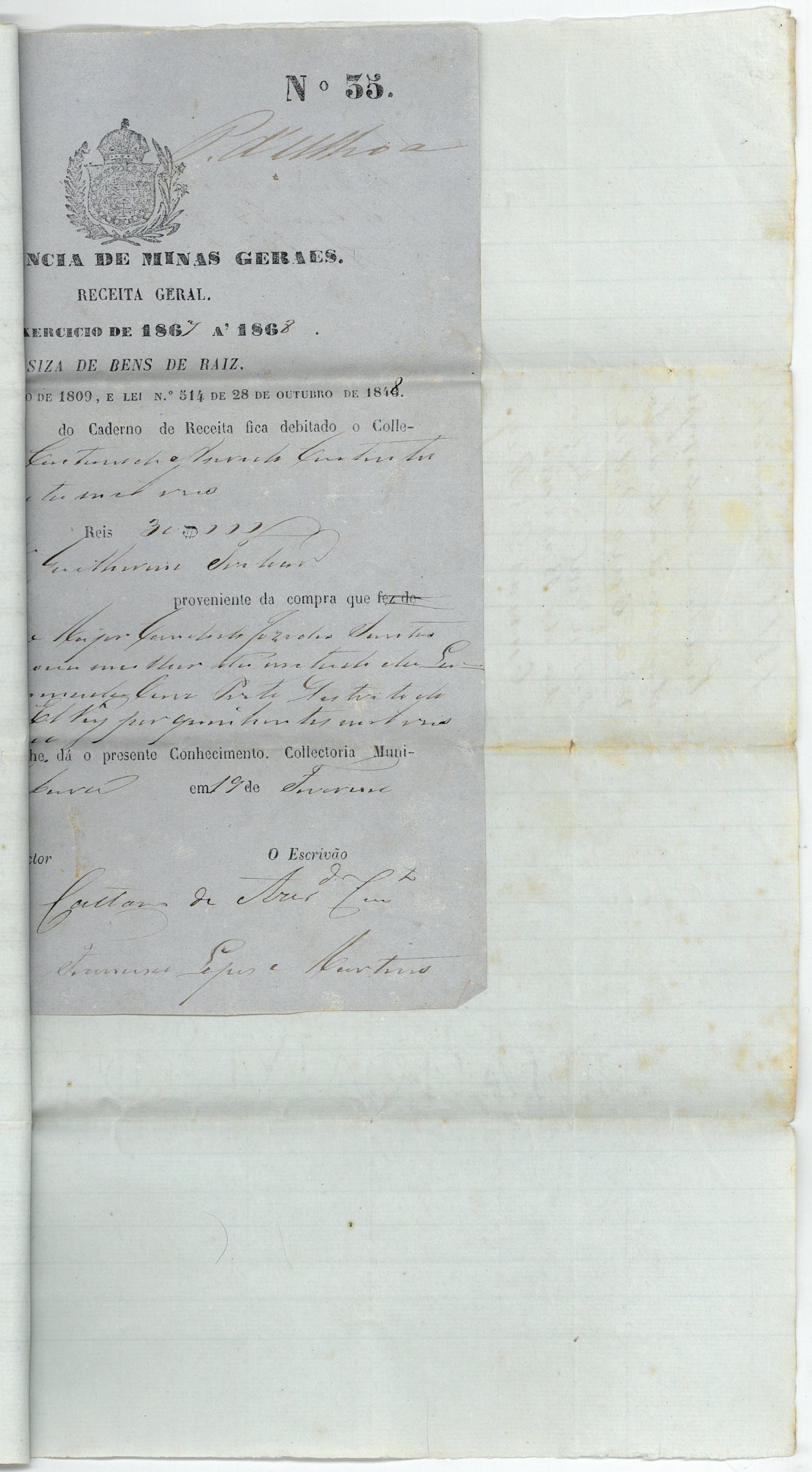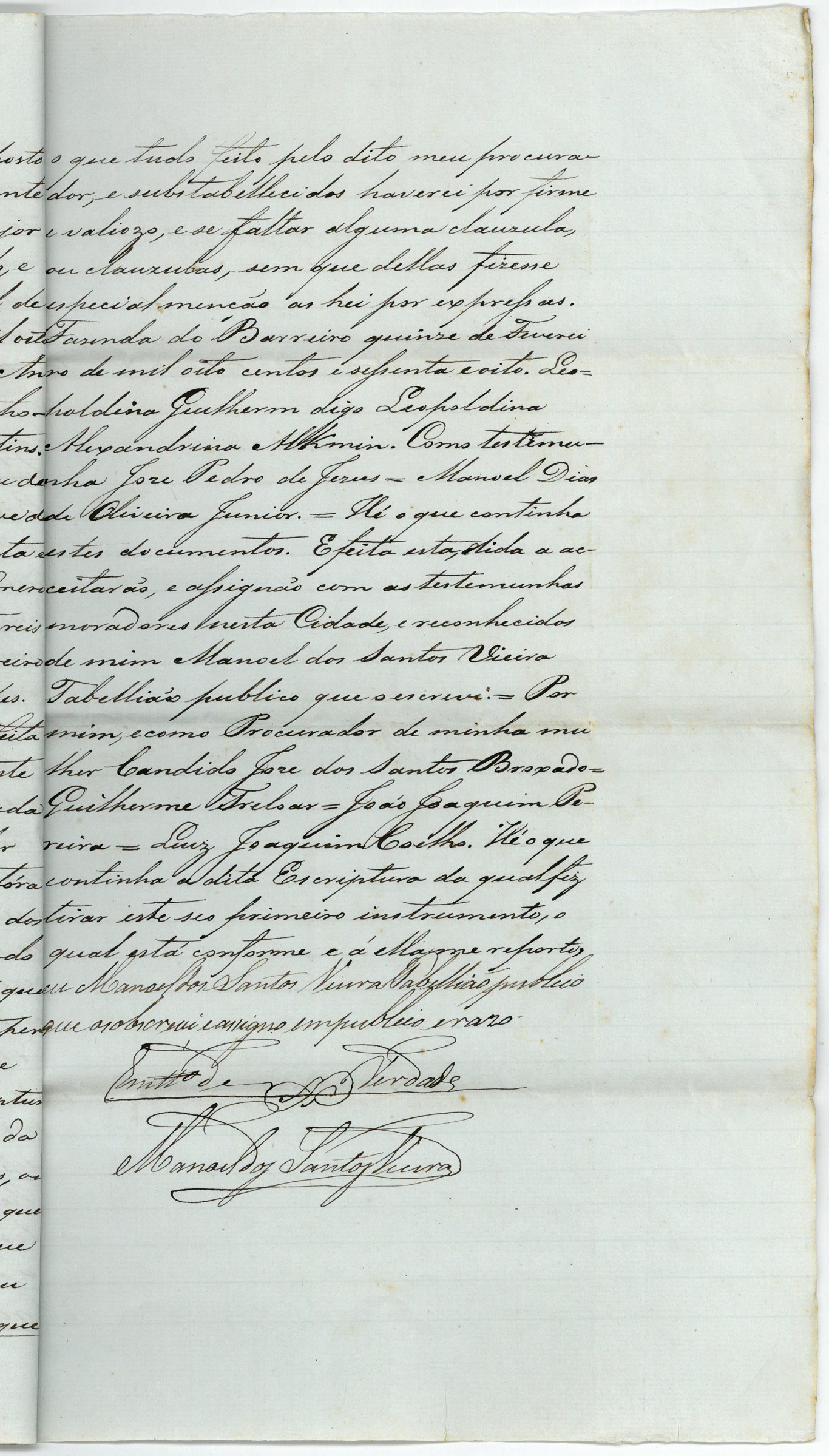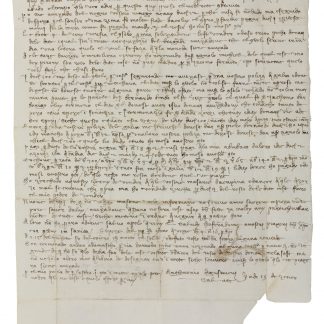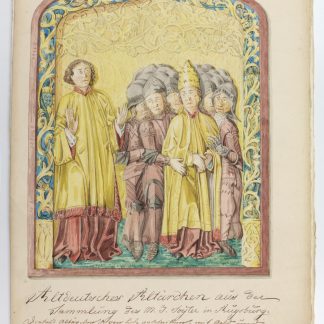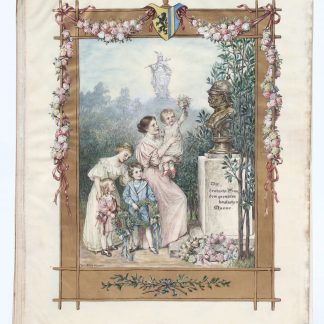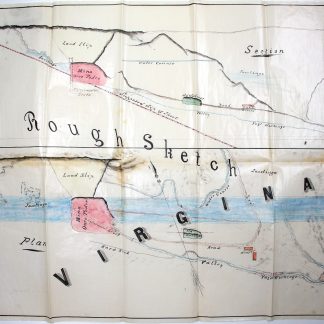The history of British mining companies in Minas Gerais
3 manuscript documents and 2 watercolour plans.
Folio. English and Portuguese manuscripts on paper.Together 12 pp. on 9 ff. The plans: 525 x 465 mm and 260 x 250 mm. Watercolour and ink on drafting linen.
€ 5,000.00
Interesting documents relating to the short-lived East d'el Rey Mining Company (1861-75) based in Sabará near Belo Horizonte in Minas Gerais. The central document in the collection is an investment proposal for the exploitation of a gold mine called Ouro Podre ("putrid gold") in Barreiro, in the region of Belo Horizonte. The name was probably due to the humidity and very soft ground that characterizes the location and is also cited as the reason why the site was not exploited by the locals: "This most extensive and very valuable property has been idle about 10 years as the formation is soft and [...] the natives knew nothing about sinking shafts nor driving ends and as far as timber work they know nothing at all. I have conversed with many old Brazilians who knew the property from childhood and all agree that the Jacutinga is very rich but the ground is too soft for the Brazilians to mine it".
Jacutingas is the local name for various vein-type mineralizations of gold, especially a soft hematite wherein gold is alloyed with palladium. Despite the allegedly easy exploitation by modern mining technology and the perfect local conditions, considering the availability of wood and water, essential for powering the "stamping mills" to separate the gold alloy, the anonymous author opens his proposal with a complaint that small-scale investment is often wrongly neglected: "We beg to hand you the following as our report in seeking investments. It is so often the case that enterprises requiring but moderate capital are passed over with neglect while those of large outlay are pounced upon with eager alacrity. Mines of immense depth surrounded with every description of difficulty seldom have to wait long for a constituency of capitalists while those that afford great facilities for working, have great natural advantages and the chance of employing a moderate capital with good returns too often have been neglected." The scale of the proposed investment indeed appears small, as the text closes with an estimation of the necessary manpower: four miners, one carpenter, and one smith, who should be "English laborers". According to a recipient's note, the proposal was handed over on 12 March 1868, possibly together with the plans and a document on the same blue paper (dated March 1868) that seems to be a diagram providing key numbers (dimensions, distances) in relation to the site and the project. The larger of the two fine watercolour plans combines a section and a plan of the mine and its surroundings, with the Jacutinga deposits marked in blue. The second plan represents a "cross section" of the Ouro Podre mine.
The final object in the collection is the purchase contract for the mine, dated 19 February 1868. The mine was bought by Guilherme Treloar, superintendent of the East d'el Rey Mining Company, suggesting that the investment proposal came from the company itself and was addressed to another British mining company or investor. The land in Barreiro was previously owned by the local conservative politician Major Cândido José dos Santos Brochado, a signatory of the contract, and his wife. This family was not only a big land holder in the region, but also owned slaves and strongly opposed the Brazilian abolitionist movement. British mining companies such as the East d'el Rey Mining Company and its more successful namesake, the Saint John d'El Rey Mining Company, rented slaves from Brazilian companies and private owners like Major Cândido, which led to harsh criticism within Brazil and England. In 1877, Cândido José dos Santos Brochado was murdered by a former slave named Matias, who had escaped after Major Cândido failed to fulfill a legal requirement to emancipate him at age 60. Slavery was not legally ended nationwide until 1888.
Occasional stains and browning. The proposal has deep tears to the folds.

